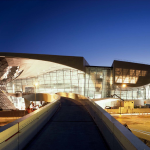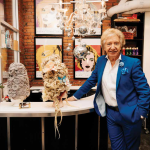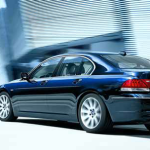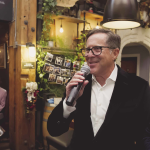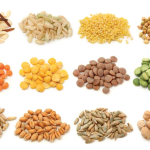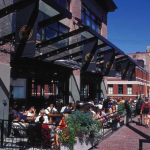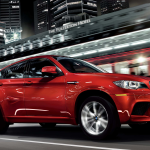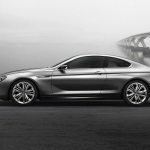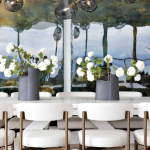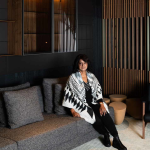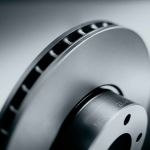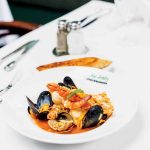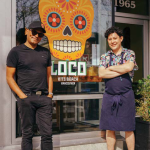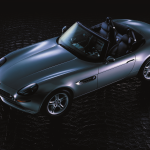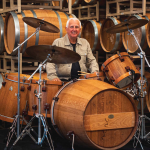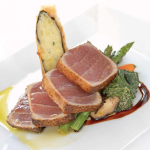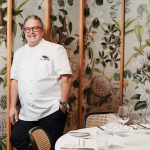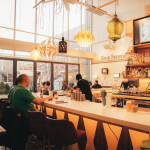
Though it lasts a scant few minutes in its pristine state, the preparation and visceral presentation of food definitely involves design. And while there exists a chasm of disparity in the visual output between the high and low end of Vancouver’s dining experiences, one thing remains abundantly clear: when it comes to food, design is vital.
Sponsored Ads
Stuart Irving is one of Vancouver’s most innovative and highly acclaimed artists in the field of food design, having crafted the menu during his time at Bin 941 before creating an all-new concept for Vancouver’s popular modern Chinese restaurant, Wild Rice. “The most important aspect of food design is, first of all, to make it look like you want to eat it,” says Irving. “The look of a dish certainly has to be appealing, because if we presented every dish in simplest terms, we’d have a plate in front of us with different foods in different sections.
When people dine out, they’re looking for something different than they can cook at home, and you want to give them something that looks unlike what they make at home. This is where presentation is important, because you always eat with your eyes first.” While the emphasis on food presentation generally focuses on visual appeal, Irving concedes that it requires a certain amount of balance. Despite a chef’s grandiose vision of a particular dish, the form of the food has to function within the confines of the restaurant in which it’s served.
“There’s no doubt that design and presentation sell items. They certainly draw interest as your customers see the look of the various dishes going by. But, as a chef, sometimes you can get a little caught up in the process,” he says. “Occasionally presentation will take over, and the finished product can sometimes end up being quite high off the plate. This can cause a couple of problems. First, it may look good in its finished form leaving the kitchen, but the higher something is stacked, the more difficult it is for the servers who are trying to carry it through the dining room.
Secondly, the way it’s presented for visual appeal may cause certain items on the plate to cool too quickly. As a rule, you don’t want to sacrifice quality for presentation; you want balance between the visual esthetic and the food’s function. There can be some compromise, but you don’t want to compromise too much. In some cases, the overall look of a menu item may not exactly have the presentation that I want esthetically, and it’s often simply the amount of time that it may require. Is it overly involved? Because others will have to cook it as well. Plus you have to be able to say, with certainty, that you
Sponsored Ads
have the quality of staff on hand to execute it. People often think that the chef is involved in the cooking of everything that comes out of a restaurant’s kitchen. He can’t be. There are others involved, as the chef can’t do everything. So you can allow some compromise, but you have to at least maintain that fine balance between function and esthetics. It’s much like the design of a car. A lot of time and effort goes into designing the vehicle, and when people see something sleek or sporty on the street, they’re initially attracted by its form or appearance.
It’s important that its functionality meet expectations as well. It may be the greatest looking car in the world, but the engineering and its capabilities can’t be sacrificed at the expense of its look.” Whether the culinary offerings are of the casual or more high-end variety, design is the name of the game. “Presentation is everything and design is paramount from the start,” says Mark James, president of the Mark James Group and proprietor of numerous Vancouver brew and tap houses. “Right from when the customer walks in, it’s all about design. . .
and everything plays into that, from the décor, the design of the room, the concept, the comfort level, the lighting, the sensory perceptions, how the food is prepared, to the plate put in front of you. It’s everything we do, and it doesn’t matter where you’re at in the business or whether it’s casual or fine dining. The consumer wants the same thing, and it’s all about design.” Every restaurant has its target market or clientele, and must design its menus and present its dishes accordingly. “It’s important certainly to offer a good- looking plate to your customers,” says Irving. “But you don’t want it to be so out there, because the perception is that the more involved the design and presentation, people think that a lot of hands were on it. It doesn’t have to look too outlandish to look good, but it has got to be tasty.”
As Irving points out, “After the first bite the presentation per se is gone. So despite the initial importance of the esthetics, the most important element in the presentation and design of food is finding an inventive and yet flavourful way of selling it.”
























